Using the FAB-Lab for BGA PCB Protyping
Many components come only in BGA packages.
Using the modella and a 1/100in end-mill it is possible to create functional boards with traces of less than 4mil width.
BGA PCB milling using the Fab-workflow:
- Is possible
- Needs the 1/100in mill
- requires every even bed
- very fine traces
- export at 2000dpi
- set Error smaller 1
- for reflow using the oven a extra thermometer in very helpful

PCB layout with 10mil spacing and 2 mill tracewidth

Milling on the Modella: feed speed 1.5mm per second
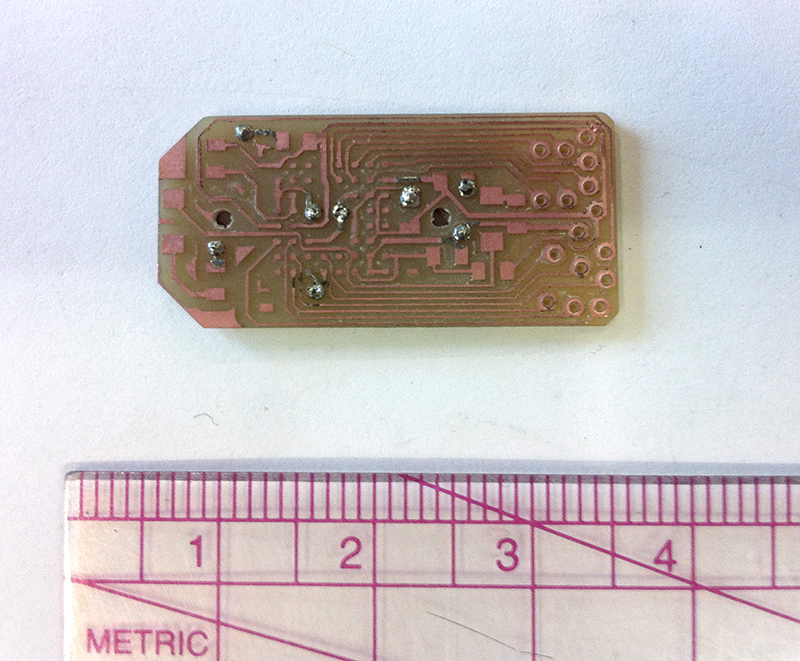
Connecting the Vias after deburring with sandpaper. The traces are quite robust

BGA package and PCB

mounted chip, with shorting bridges
FAB soldermask
My first tries did not yield good results, because the solderballs would bridge the pads. I assuemed this was beacause of the escape routes. The fab-process made pcbs lack the soldermask. Soldermask is a thin layer of epoxi-resin that is applied ontop of the copper, covering and isolating all traces that do not need to be exposed.
Most PCB layout programs create a soldermask for you. It would be very nice to be able to fabricate pcbs with some kind of soldermask using the fab process.
The idea was to first mill out the traces, then with the board still in place, applie a piece of capton tape and mill a second program that would clear the pads of the capton tape. To genereate pngs that contain the soldermask, all that was needed was to adapt the eagle makefile to export this layer to a png. The mill is zeroed on the bare copper and the prgram run with 0 z-depth.
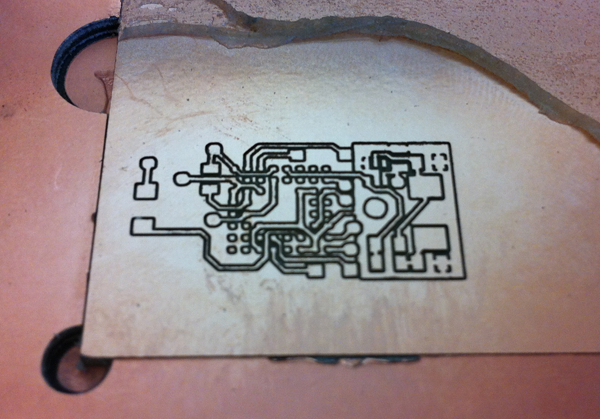
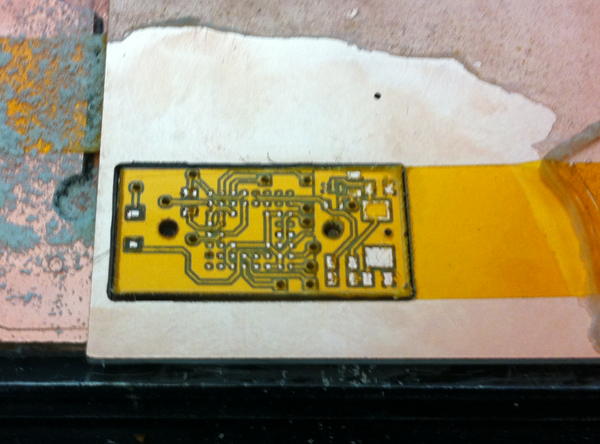
The problem that arose and finally let to termination of this stream of inquiry was that the mill head is not very good a plunging. The capton tape was sometimes not cut as the stiffness of the machine was insufficiant. Increasing the pressure on the worktool to allow penetration by setting the cutdepth slighly deeper resulted is reliable cutting of the kapton tape but also milled the copper at some places, effectivly isolating the pad from the trace.
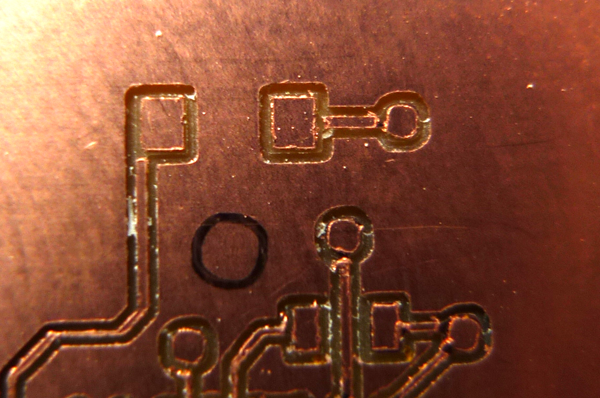
Isolated trace from soldermask milling
reflow with alignment aid
The second attempt to reflow a bga component was a success. This time I created a placement frame that would position the components perfecly and hold it in place during reflow.
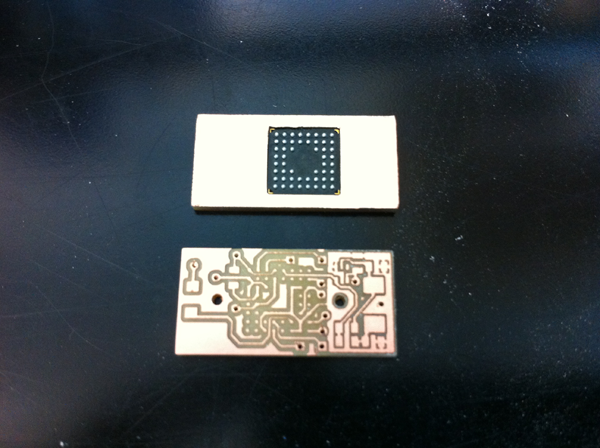
bga component held by the alignment aid and the board.

reflow in convection oven
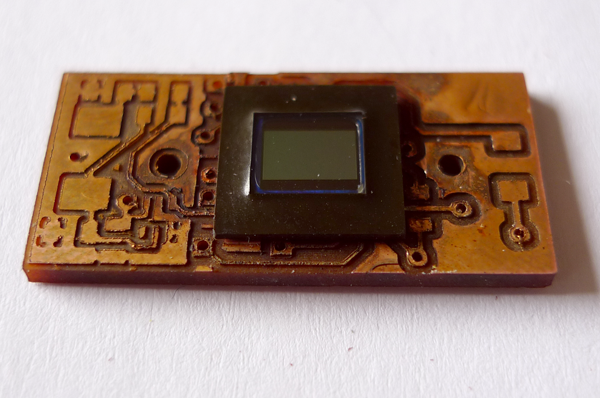
after reflow. the board is browned but still functional.